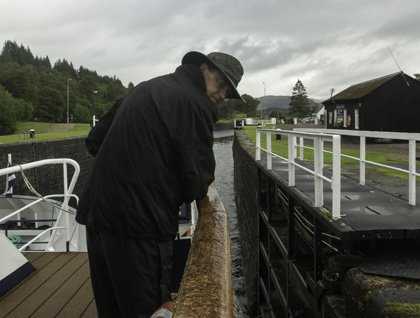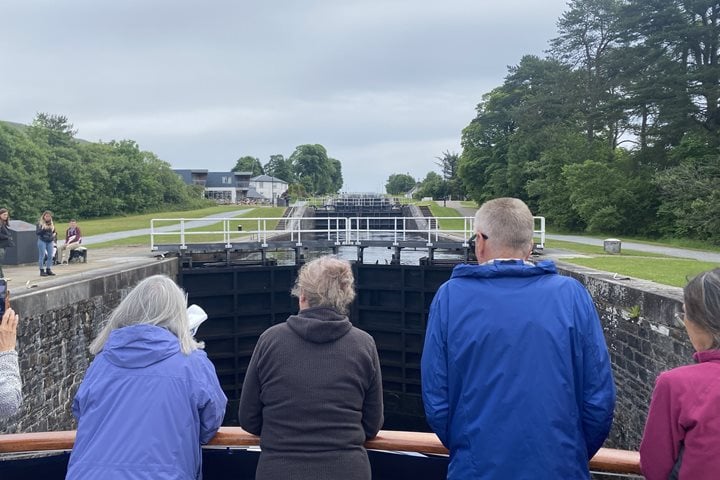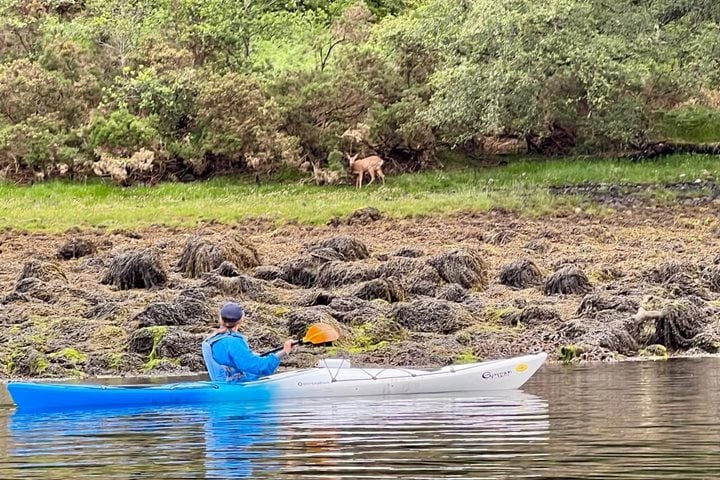We spent our day making a truly remarkable passage, through the heart of the Scottish Highlands, by water. The Caledonian Canal is among the greatest engineering feats of the early 19th century, built for a war that was over before the canal was completed, and still important for merchant and military shipping today. The canal follows the Great Glen, a tremendous geologic suture formed in Scotland’s deep past when two ancient continents collided, leaving a fault that has been cut into a deep valley by the glaciers of the ice ages. With a series of lock chambers and manmade channels, the canal connects the four freshwater lochs that lay in the Glen into a chain that reaches across the breadth of the nation, from sea to stormy sea.
Although the hand-cranked lock gates have been replaced by hydraulics, much of the canal still appears exactly as it did when it first entered service in 1822. The narrow passages are lined with meadows and trees that seem ageless and the great lochs still reflect the dark forests on their shores or shatter into waves and whitecaps when the wind tears down the valleys from the North Sea to the Atlantic. One original swing bridge still remains in operation, waiting to offer easy passage across the canal, just as it has for nearly 200 years.
The Lord of the Glens was a perfect platform for our transit of this historic waterway. Designed to fit precisely into the lock chambers, her weather decks were so close to the old stonewalls that many times we could have easily stepped ashore and we frequently hailed people on the towpath, striking up conversations while they took our photograph and we took theirs. Our captain was at the wing station outside the bridge for most of the day, threading the needle with gentle pushes of the bow thruster as we entered and exited each chamber. As he used this somewhat more modern maneuvering technology, the lock masters pulled our lines off the bollards and walked them up the tops of the walls to the next chamber in exactly the manner that Napoleonic era warships and merchant vessels used two centuries ago.
It was a lovely, quiet, contemplative day, with plenty of time to go in for a cup of tea or hot chocolate, read a book or listen to one of the presentations from the staff. And plenty of time to stand on deck, watching our slow passage through the heart of Scotland, plenty of time to feel a strong connection with all the travelers who had passed this way before us.







